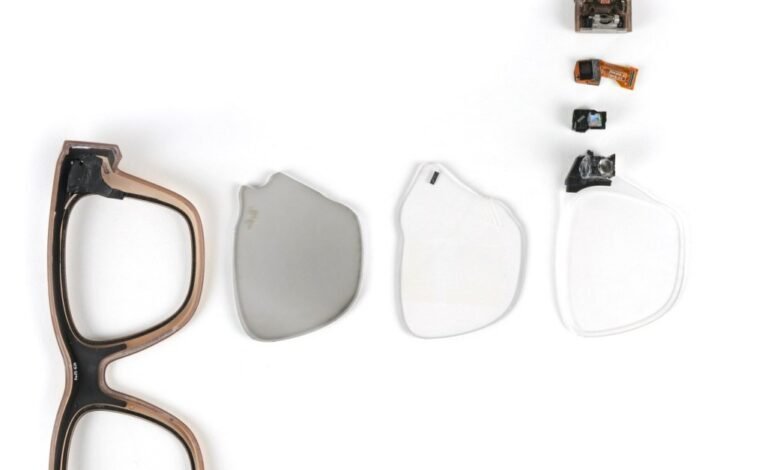The Secret Tech in Meta’s Ray-Bans Is the Glass Itself

▼ Summary
– The Ray-Ban Display glasses’ special feature is their glassmaking, using a reflective geometric waveguide system to project images only to the wearer’s eyes.
– A micro-projector in the right arm uses three LEDs and liquid crystal on silicon technology to create a 600×600-pixel grid image.
– The geometric waveguide lenses avoid rainbow artifacts and eye glow issues common in older diffractive AR glass systems.
– The advanced glass lenses are expensive to produce, leading iFixit to speculate Meta may be selling the glasses at a loss.
– iFixit found the glasses unrepairable in their first iteration, requiring specialized tools and skills for any repairs with no way to reassemble clipped parts.
A recent teardown by iFixit has uncovered that the true innovation in Meta’s Ray-Ban smart glasses lies not in the electronics, but in the advanced optical glass itself. This sophisticated glassmaking technology enables the discreet display features that set these glasses apart from other augmented reality devices on the market.
The lenses incorporate what’s known as a reflective geometric waveguide system. This complex arrangement uses partially reflective mirrors to bounce light toward the wearer’s eyes at precise angles. This clever optical engineering creates a private viewing experience, preventing bystanders from seeing the display when they look at someone wearing the glasses.
This lens system works in concert with a micro-projector housed in the right arm of the frames. The projector employs liquid crystal on silicon technology, utilizing three LEDs to project images onto a 600 by 600 pixel grid. Unlike older diffractive systems found in competing AR glasses, which can produce rainbow-like visual artifacts for the wearer and create noticeable eye glow for observers, this geometric waveguide approach provides a cleaner visual experience.
However, this advanced glass technology comes with significant manufacturing costs. iFixit’s analysis suggests Meta might actually be selling these smart glasses at a financial loss, potentially using them as a platform to showcase their technological capabilities rather than as a immediate profit generator.
The teardown process itself revealed challenges for potential owners. iFixit technicians had to physically split the arms and frame to access internal components, discovering that Meta designed them without any means to reassemble the pieces. This design choice raises concerns about long-term usability, particularly for essential maintenance like battery replacements.
According to iFixit’s teardown specialist Shahram Mokhtari, “Any repairs here are going to need specialized skills and specialized tools.” He further noted that it’s “very clear that the first iterations of these smartglasses are going to be unrepairable,” highlighting the trade-off between cutting-edge technology and user serviceability in these early-generation devices.
(Source: The Verge)





